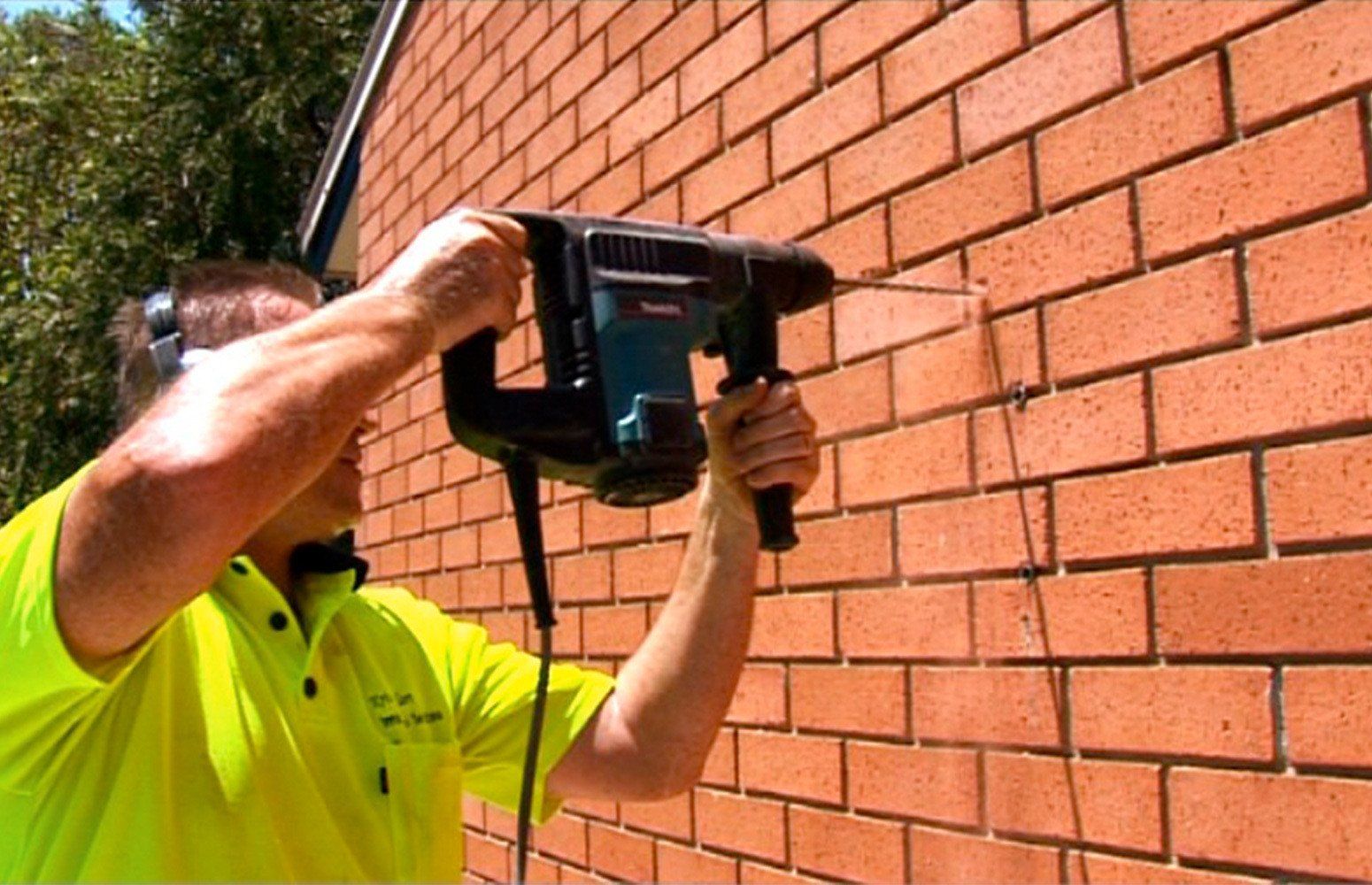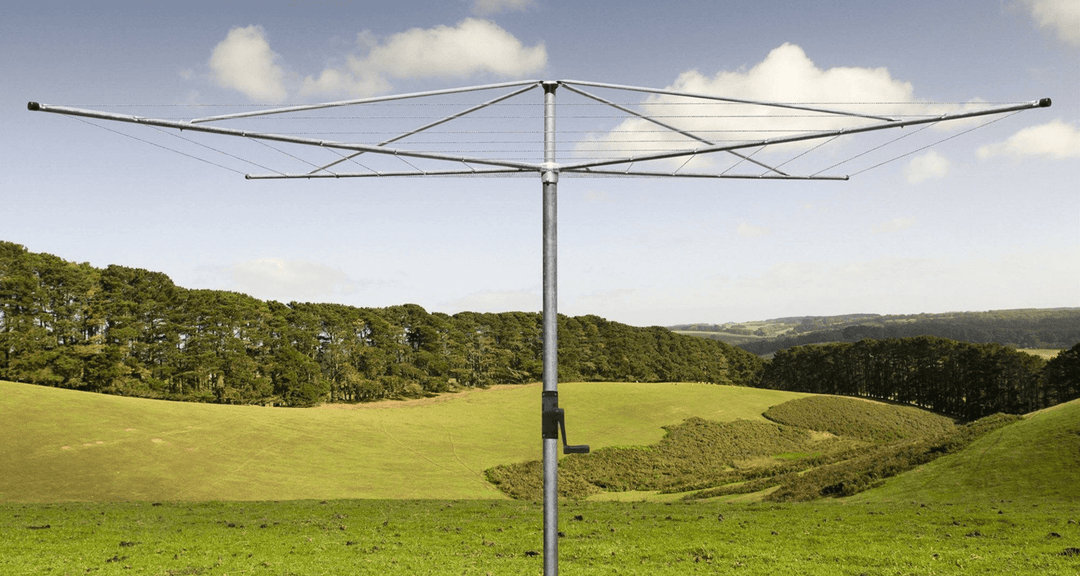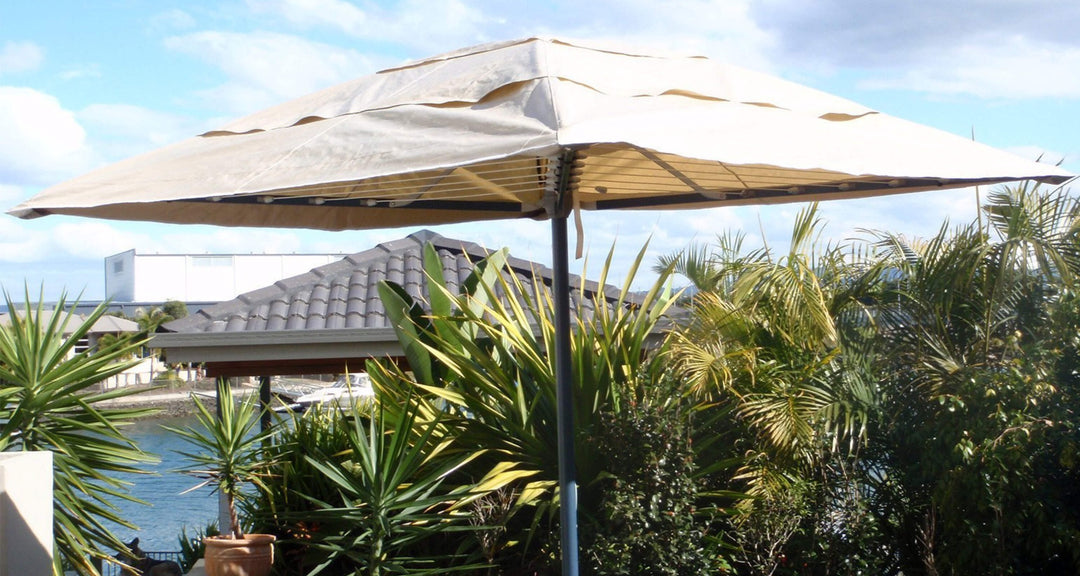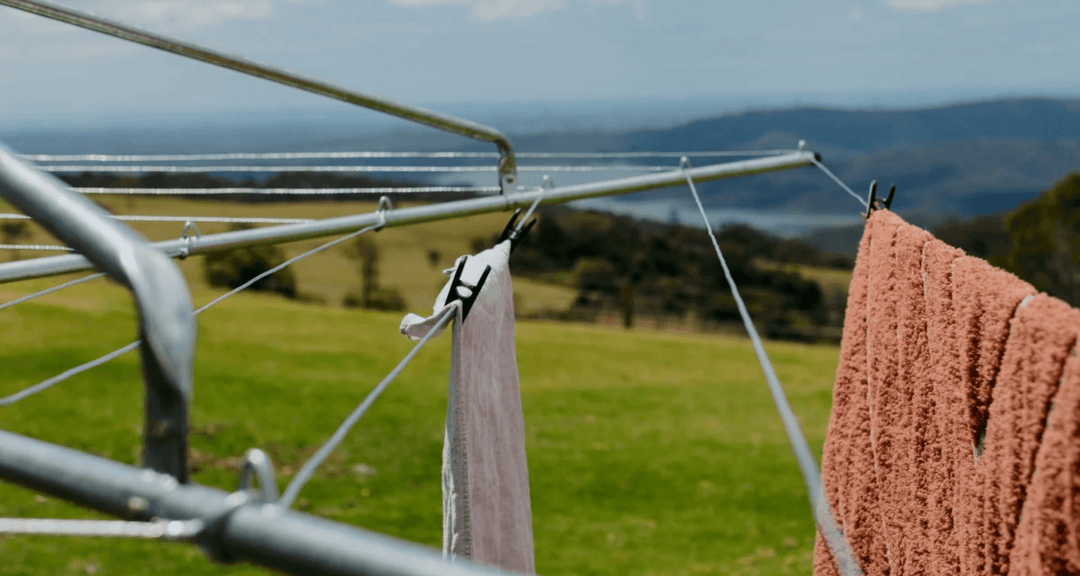HOW TO AVOID
CHOOSING THE WRONG
CLOTHESLINE POSTS
People often overlook something as simple as choosing the type of wood or metal for the clothesline posts, thinking that any wood or metal will do wherever they live or maybe end up being unsatisfied of the end result simply because they took the shotgun approach.
Selecting the right clothesline post kits is imperative, you see, you use the contraption once or twice a week—that’s forty eight to ninety six times a year! The numbers do add up and of course you’ll want every laundry day to be as convenient as possible.
Washing line posts or ready-made washing line post kits that are too high might need a bit of trimming since it can make it difficult to hang clothes, cheap wood rots in a few years, and using ordinary steel in a rainy or wet location is a no-no.
While we have briefly tackled the best type of timber or metal to use for clothesline posts in a previous article, we figured that it will be beneficial to all of you if we delve deeper into the topic in hopes of ensuring that you guys will avoid picking the wrong clothesline posts to install.
Frankly speaking, clotheslines are simple contraptions normally taken for granted, after all, most of us don’t even pay attention to them once installed and yet we expect these humble devices to work their magic whenever we do laundry.
Choose the Correct Height
Let’s start off by determining the correct height of your DIY clothesline posts . The length of the posts varies from one household to another, there is actually no standard height for this although a very popular length appears to be 180 centimetres.
A good way to determine this is to lift your arms straight and measure how high your wrists are from the ground while standing straight, add one meter to this to offset the height for when the posts are buried into the ground.
You want the post to be high enough so it can accommodate your bed linen and long dresses or pants but easy to hang them at the same time. Do keep in mind though that this advice is best for individuals who are on the taller side of the spectrum, a clothesline should not be shorter than 170 centimetres at the very least.
The Right Material for the Environment
Next up is matching the correct posts for the kind of environment you live in. There are a lot of suitable materials to consider when picking out clothesline posts but the most important factor to remember is if it will last.
It’s imperative that you choose the correct clothesline posts because these will be hanging out in your backyard 100% of the time so it should be able to stand against the usual elements, not to mention,the total weight of your wet laundry and the occasional storm.
For dry and warm areas you can go with almost any type of timber or metal without much fuss. If you live in a somewhat rainy territory, some types of timber can last long with little maintenance but really, you can’t go wrong with metal.
•••••••••••••••••••••••••••••••••••••••••••••••••••••••••••••••••••••••
choose the clothesline
posts for the right
environment
•••••••••••••••••••••••••••••••••••••••••••••••••••••••••••••••••••••••
If your property is near the beach, some types of timber can still work for you but you should pay a bit more attention to details if you want to go for something like standard galvanised steel steel, there is a big chance that your steel post will corrode faster than normal no thanks to the salty water and higher than usual humidity in these locations.
Why not go with just any type of wood or metal you say? Well to lessen the confusion on your part, let us explain things a bit further below before you start digging those holes.
Not All Metals are Created Equal
There are three common types of metal/alloy used to make clothesline posts, mainly aluminium, galvanised steel, and stainless steel. Galvanised steel is amongst the most popular choice due to its cost effectiveness and second is aluminium.
Other than being affordable, galvanised steel is sturdy and easy to get hold of because it is available everywhere, but compared to aluminium and stainless steel, this material is a lot less resistant to corrosion or rusting. Don’t be put off by that one thing though, if placed in the right environment galvanised steel can actually last for decades!
•••••••••••••••••••••••••••••••••••••••••••••••••••••••••••••••••••••••
Galvanised steel is amongst
the most popular choice
due to its cost effectiveness
and second is aluminium
•••••••••••••••••••••••••••••••••••••••••••••••••••••••••••••••••••••••
Galvanisation is the process of submerging steel into a big vat ofmolten zinc, the iron in the steel metallurgically reacts with the zinc to form a tightly-bonded alloy coating that provides superior corrosion protection to steel, so you get the benefit of steel’s tensile strength along with rust resistance.
So let’s talk about aluminium. Other than being lightweight, this metal also strikes the perfect balance between affordability and
durability, it is resistive against corrosion so it works great in marine applications or beachfront homes and is just as easy to obtain like galvanised steel. The only problem with aluminium though is it is not as hard as its steel cousins at the same density.
Keep in mind that aluminium is a little softer, clothesline posts made from this material may be prone to kinking or bending in rough winds but more often than not, that has more to do with choosing the correct thickness/grade of aluminium so talk to your hardware store on the best thickness for a clothesline pole.
The finest metal for any kind of environment is stainless steel. It’s like a hybrid of your typical high strength steel but with the rust resistance prowess of aluminium which means it can pretty much handle anything you’ve got, now we’re not saying that stainless steel doesn’t rust—it does, albeit, mostly on the exterior and can be sanded off without compromising the material integrity.
Our issue here is cost. Stainless steel can become expensive excluding the work needed to transform it into a T-post and it can even be considered overkill for clothesline utilisation but no one is stopping you from using it, right? Either way, there are two common choices for stainless steel, the 304 and 316.
•••••••••••••••••••••••••••••••••••••••••••••••••••••••••••••••••••••••
The finest metal for any
kind of environment is
stainless steel.
•••••••••••••••••••••••••••••••••••••••••••••••••••••••••••••••••••••••
If you’ve ever been on a yacht you may have noticed that the railings and cleats around the boat are mostly made out of shimmery metal, those are most likely made out of stainless steel 316. It can be quite baffling as to how pristine this metal looks despite exposure to salt and water that’s why we recommend this material in homes near saltwater/beaches.
If you’re purchasing a ready-made washing line post kit made of metal, you will likely encounter multiple parts mostly if it’s one of those retractable/telescopic variety, keep in mind that such designs might require some repair when something breaks or wears out, make sure to go with a brand that you won’t encounter issues when the need for spare parts arrive.
Best Types of Wood
Alright, so what about wood? For this category, we took the liberty of narrowing it down to just two choices, mainly Pressure Treated Wood or plain hardwood, the former being reasonably priced and accessible while the latter is for those who need something extra.
•••••••••••••••••••••••••••••••••••••••••••••••••••••••••••••••••••••••
Pressure treatment
allows the wood to
become resistant to
rotting and even
catching flames
•••••••••••••••••••••••••••••••••••••••••••••••••••••••••••••••••••••••
So what is ‘Pressure Treated Wood or PTW? Let us explain further, pressure treatment is a popular method of saturating the wood fibres with liquid chemicals like alkaline copper quat orcopper azole.
The lumber is placed inside an autoclave-like chamber which is then filled with the chemical until the lumber is fully submerged, air or more chemical is pumped in to exert positive pressure and force it deep within the wood.
Due to the high concentration of copper and fungicide, the lumber will be able to resist rotting and insects like termite, some companies even offer fireproof wood that form glass particles when exposed to extreme heat!
Pine wood is prevalent in the PTW business therefore it is the easiest to find, PTWs aren’t as expensive as hardwood and is usually found in many hardware stores so it is quite convenient to use.
What’s really awesome with this material is the evidence of its average lifespan. Based on statistics, PTWs can last up to 30 years with little care so it is a good alternative to hardwood and since it’s more resilient to the elements compared to ordinary lumber, you can just stain it with wood oil and still get that good-old woodgrain look without breaking the bank!
As for hardwood, it is best to opt for the ‘heartwood’ of cypress, cedar, teak, or redwood. The heartwood is the dense, innermost part of the tree trunk and serves as the main supporting structure, and out of the species we have mentioned above, teak and redwood are some of the best.
•••••••••••••••••••••••••••••••••••••••••••••••••••••••••••••••••••••••
Based on statistics,
PTWs can last up to
30 years
•••••••••••••••••••••••••••••••••••••••••••••••••••••••••••••••••••••••
Hardwoods have the natural capability to withstand adverse weather and the highly compressed wood fibres can resist fire too without the need for any chemical treatment so they last a very long time.
As a matter of fact, hardwood like Cypress is so durable that many of Japan’s shrines and temples are still standing today even after hundreds of years. We’re not saying that you need clotheslines to last for aeons but it is never a bad idea to invest in something that can be relied upon with complete confidence.
Like we have mentioned earlier, unless you have a very discerning taste in terms of aesthetics, plane old PTW that’s stained will be more than enough for a clothesline post kit, now you have an idea as to the kind of timber to choose for your next DIY project.
A quick recap on how to avoid choosing the wrong washing line posts:
1. The height must be just right.
- Not too low, not too high. You want it set to a height that will allow you to conveniently hang your clothes while being not too low wherein your articles would touch the ground.
- That standard height for most posts is 180 centimetres.
- That standard height for most posts is 180 centimetres.
2. Don’t forget to add a meter to the total length of the post if you’re basing the height on yours.
- To ensure that there’s still an allowance on the length for when it is anchored into the ground.
3. The right posts for the environment.
- Stainless steel or aluminium for salty regions, galvanised steel everywhere else.
- Spare parts for telescopic posts should be easy to obtain for repairs.
- Pressure treated wood is good enough for most places.
- Hardwood or aluminium/stainless steel for wet regions, opt for ‘heartwood’ if possible for the hardwood to ensure the long life of your posts.
4. Be creative!
- Throw in some curves, carvings, or colours.
- Make it double duty, add provisions for installing a canopy or maybe use trellises so you can
grow fruits and vegetables while you dry your clothes.
- It will be installed for good, you don’t want it to stand out like a sore thumb!
Taking Your Creativity a Step Further
We almost forgot about the last part of the recap, since we have already discussed the do’s and don’ts for your clothesline posts, if you know a brilliant woodworker ask if he can throw in some beautiful carvings on it.
Some people have turned their clothesline posts into brilliant sculptural pieces while those with creative green thumbs chose trellises as their posts to let their vines thrive. You can even turn your clothesline into a dual purpose furniture by throwing in a canopy and hammock in the mix for a tasteful flair.
Don’t restrict yourself within the norm, something as simple as as a T-post can become an ornamental feature in your backyard, it is a permanent fixture so might as well be creative with it, avoid making it look ordinary for all the world to see.
We know and understand that there are a lot of choices out there and it can get quite overwhelming so getting a little bit of help while learning about the smallest things will certainly lead to a positive outcome, we hope that you will now be able to make a sound decision by avoiding mistakes in choosing your clothesline posts.
 Fold Down
Fold Down

 Rotary Hoist
Rotary Hoist
 Retractable
Retractable
 Portable
Portable
 Ceiling Airer
Ceiling Airer
 Covers
Covers






